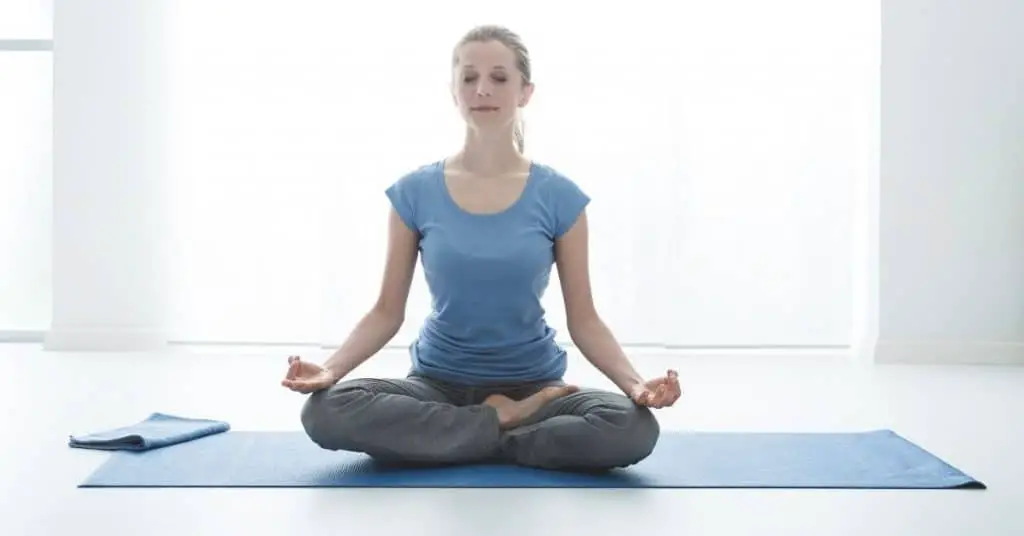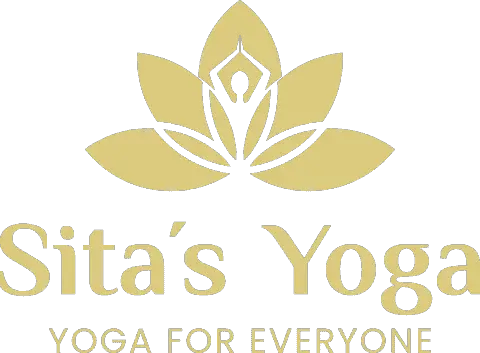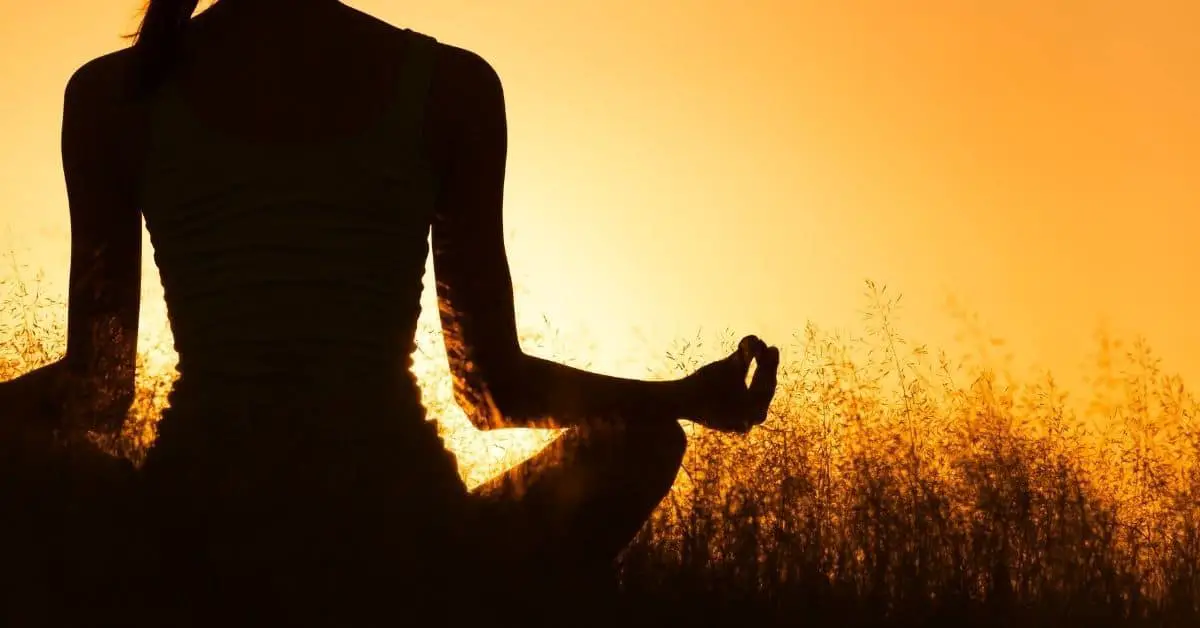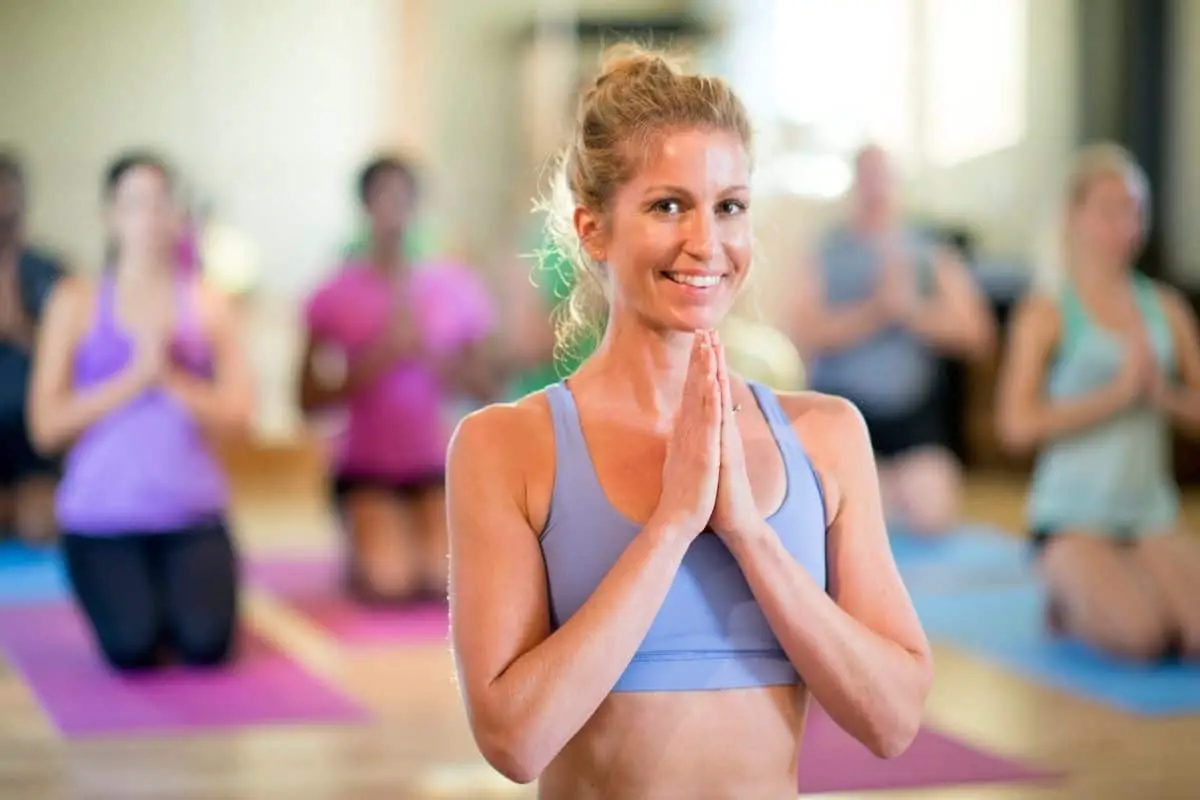While sitting in a full Lotus Posture is certainly full of benefits for both your body and mind, it can be a position that feels beyond the range of motion for many westerners, even those with a deep yoga practice. As a position that many practitioners may struggle with, one might begin to wonder if practicing the full Lotus Position is really a necessary asana for personal practice.
A lotus position is not really necessary. While it is beneficial, you can still have a deep and meaningful practice without reaching a full Lotus posture. There are modifications and variations you can use to give yourself the intended benefits while accepting your body’s current abilities.
The Lotus Position, also known as Padmasana, is traditionally used in many yogic practices, from the physical asana practice to a common seat to practice pranayama or meditation. In the rest of this article, we will understand its intended benefits and what can be done to feel the same benefits while modifying the pose to better suit your needs.
Benefits of the Lotus Position

The Lotus Position offers multiple effects to its practitioner. As both a hip opener and a heart opener, you will feel it working in multiple areas of both your physical body and energetic body. To better understand the benefits you should seek through your modifications, let’s look at why the Lotus Position is such a sought-after pose in the first place.
Heart Opening Benefits
When you perform yoga positions designed to open your heart space, you will start to feel better posture, the ability to breathe more deeply, and emotional cleansing. To put it in more scientific terms, you are engaging in an exercise that is stretching both your thoracic cavity and your diaphragm. As you repeatedly bring more expansion to these areas, you will have more space and flexibility in your ribs and lungs.
You will be able to experience this increased openness and flexibility through a variety of physical sensations. One of these is the ability to take deeper, more meaningful breaths. This is an amazing benefit for asana practice, pranayama, and also simply throughout your regular day. Yogic traditions respect the breath, or prana, as the essential life force, and being able to breathe more deeply will connect you more meaningfully to your body in the present moment.
In modern life, we are so accustomed to hunching over to interact with our phones, computer screens, and a variety of other tasks. It’s no secret that modern life and excellent posture are not always compatible. Heart opening exercises help reverse this hunching habit and help us more naturally send our hearts forward and our shoulders back. Coming into this more erect position helps feel brighter with alertness and vitality.
You can even test this out for yourself on a small scale right now as you read this. Take a deep breath in, allowing your heart space to come forward and lift, allowing your shoulders to fall back. See if you can feel how this increased attention to the shape of your spine gives you a kick of alertness.
Effects on the Heart Chakra
Lastly, we have an energetic benefit of heart-opening positions. This has to do with the effect on the heart chakra. The seven main chakras, or energy centers throughout our body, are responsible for different functions in our emotional and physical health. Starting with the first chakra at the base of our spine and ending with the seventh chakra at the crown of our head, it is important to let the energy flow freely from chakra to chakra to feel balanced and happy in life.
The Fourth Chakra is the Heart Chakra, also known by its Sanskrit name Anahata. This chakra is very significant when it comes to connecting in a deep and meaningful way to the world around you. With a healthy, open heart chakra, you can enter into states of love with your own self, the people around you, and the environment you are surrounded by.
With a blocked and unbalanced Heart Chakra, it is much more difficult to be in a state of self-love and compassionate acceptance of those around you. You may notice an inability to connect and be close to others. By practicing exercises to open your heart chakra and let the energy flow more freely through this space, you will be moving towards a positive transformation in these areas.
Hip Opening Benefits
As with the heart openers, hip openers have both physical and energetic benefits. How your lower-back feels are highly dependent on what is happening in your hips physically. The more you create space and flexibility in your hip joints, the more you are able to contribute to the health and comfort of your lower back. If you are experiencing pain in this area of your back, practicing a range of hip openers may be of great benefit to you.
In Western Culture, our daily activities typically do not do much to help keep our hips open. By spending time in chairs as opposed to on the floor, we are not using our hip joints in their full range of motion very often. Tight hips don’t just mean back pain and other stiffness in the body, but also have a great emotional significance.
Heavy, negative, unreleased emotions end up stored in the hips. Perhaps you’ve had the experience in the middle of the yoga class, as you sink into a hip-opening pose, you can feel tears coming to your eyes. You might not have been feeling like crying at all that day, but by engaging in positions that open the hips, you are allowing the negative emotional storage to become free as well.
Let’s explore more deeply the energetic effects of hip openers on the practitioner.
Effects on the Sacral Chakra
The hips are connected with the second chakra, known as the Sacral Chakra, or in Sanskrit as Svadhisthana. This chakra is a powerhouse for many functions in the body, including emotions and creativity. If your hips are tight, and this chakra is blocked, it is difficult to enter into the flow of new ideas and access the mysterious force of creativity.
Blockages in this area also allow emotions to overpower you. Particularly with negative emotions, it is possible to become stuck in whichever destructive feeling arises, and it becomes seemingly difficult to break free. By increasing the energy flow through this chakra, you will be able to break the hold of the negativity and return once again to a more natural flow where emotions both come and go without taking hold too strongly.
Opening hips will open your emotions and allow you to release negativity you have been unnecessarily carrying around with you. It will also give you greater power to access creativity rather than obsess about pleasures that will ultimately not bring you the joy you seek.
Grounding Down While Opening Up
It is significant that Lotus Position both grounds you down by opening the hips and lifts you upwards by opening the heart space. By this position, working both down and up simultaneously, you enter into a beautiful state of open energy flow.
The grounding you experience in your lower chakras while sitting in Lotus will bring a calming, stabilizing force to the practitioner. This may be experienced by feeling calmer or less frazzled and feeling like the earth is there to hold and support you. This can cause less chatter to be then occurring in mind. Things that were bothering you before your practice still exist in the world but no longer seem like such a big deal.
From your grounded lower body and your erect spine, energy is free to move upwards. As energy is allowed to move as it was intended freely, you will be able to bring attention to upper chakras responsible for connecting to more divine energies and provide you with a more profound spiritual experience, especially during the practice of meditation.
For example, many meditations guide the practitioner to feel the essence of each of their chakras. It is typically a process of starting with the first chakra and moving upwards. By sitting in a way that allows the energy to move upwards, following the internal energy up the body through the 6th and even 7th Chakras will give the practitioner a much deeper experience than if meditating while the internal energy flow was blocked.
Holistic Approach to Modifications
Now that we know why the Lotus Position is of great benefit to its practitioner let’s shift to discovering how we can practice something similar and still receive the same benefits but in a gentler way on our bodies. This is also a good moment to remind ourselves of the intention behind the practice of yoga.
When practicing yoga, it is, of course, not a competition to accumulate as many successful positions as possible. It is an ancient practice to unify the mind and body and come back to your true self. A vital piece of this is the ability to accept the present moment as it is, as it presents itself exactly.
If your body cannot be comfortable sitting in the Lotus Position in the present moment, you must practice accepting this about your body lovingly. To fight this, feel shame, or wish the present moment was some other way will only bring you more mental agitation. It is this type of agitation that yoga is here to help us dissolve.
Remember, more important than being able to do any certain position is accepting your body exactly as it is. It is not necessary to achieve any certain position, including Lotus. It is necessary to bring harmony between your mind and the physical body. Once you have accepted yourself as you are today, let’s take a look at some modifications you can try to achieve the benefits offered by padmasana in a more accessible way.
Modifying the Full Lotus Position
There are several seated positions you can try that aim for the same benefits of Padmasana. Let’s begin with the simplest and most accessible, regardless of flexibility.
Easy Pose (Sukasana)
In yoga, sitting in a comfortable, cross-legged seat that allows you to feel at ease is known as Easy Pose or Sukhasana. This is a great starting point for anyone beginning the hip-opening journey and can even be modified within this form. You could use blankets, cushions, blocks, or bolsters to arrange yourself comfortably on the ground. The goal is to sit at ease, grounding yourself down while lifting your heart with a straight spine.
A further modification for Sukasana can even be sitting with an erect spine in a chair. This recommendation is best for meditation practice if sitting on the floor does not yet seem possible. This modification will allow the correct energy flow while easing you to begin your meditation practice.
It is important to remember that the English name “Easy Pose” can be misleading. Here, “easy” is coming from the idea of sitting with ease and comfort, not necessarily sitting simplistically. For this posture, set your intention to find a seated position that allows you to experience ease.
Half Lotus (Ardha Padmasana)
Over time and with practice, if you feel that you are ready for a seated position that requires a bit more hip flexibility, you may begin to try the Half Lotus position. As the name suggests, this will require one leg to be resting on top of the opposite thigh. The other leg will remain on the ground, as it would be in Sukhasana. You can practice alternating which leg you place on top, giving both hip joints a chance to practice moving in this way.
Of course, you can use the same props in this position to achieve more comfort. Sitting up on a blanket or block will give you some more space for your joints to work with.
The Lotus Position for Eastern and Western Bodies
While there is certainly something to be said for slowly progressing in flexibility over time, there is something to understand about the cultural context that this position is coming from. The amount of flexibility in the hip and knee joints required for Lotus Pose is more compatible with an Eastern upbringing than a Western one.
Daily Activity Level in the East and West
Typically, in Eastern cultures, much more daily life is conducted closer to the floor than in the West. It is quite common to be sitting on the floor, perhaps cross-legged or kneeling for long periods of time. It is natural in many countries throughout Asia to be sitting and squatting on and off throughout the day, every day. By becoming accustomed to these types of daily movement, hip joints especially are much more likely to stay flexible.
On the contrary, people in Western Societies are much less likely to be squatting or sitting directly on the ground during their daily lives. Westerners will likely sit on chairs at the dinner table rather than share a meal on the ground. Western bodies are not used to this type of exposure in sitting and squatting positions. They typically do not develop the same flexibility in the hips and knees that many Eastern countries acquire.
Impact on Flexibility and Range of Motion
The pattern of daily activity is not just relevant in your individual life, but your ancestral patterns will have impacted how the bodies in your family have evolved. European traditions have shaped bodies in the West for generations, as Asian traditions have in their part of the world. So, depending on where you are from and its history of activity, your joints will respond to the Lotus Position differently.
Some empirical data regarding this has been gathered in the field of joint replacements. Interestingly enough, hip and knee replacements surgeries that use the average Western range of motion to create the prosthetic are not suitable for patients from countries like Japan or India. They require a prosthetic that exhibits a wider range of motion for the patient to go about their daily activities comfortably.
This is not to say that if you come from a Western country, that Lotus is unattainable. It is merely to understand your body better and help with its journey to more open hips and greater flexibility.
Final Thoughts
When it comes to the Lotus Position, there is no need to stress if you cannot bring both of your feet to the top of each thigh.
Remember to listen to your body at all times when practicing yoga. Accept how your body feels and do not give in to the temptation to force a position or push yourself beyond what your body can handle at that moment. Proceed with love and care for your body as you find the right seat for you.
By merely accepting your body as it is today and finding a suitable modification for you, you will be able to enjoy the myriad of intended physical and energetic benefits. You will also be able to use your modification of choice for any pranayama practice as well as any meditation you may wish to do.
Sources
- Chakras Info: The Heart Chakra
- Chakras Info: The Sacral Chakra
- Very Well Fit: How To Do Easy Pose (Sukhasana)
- Very Well Fit: Hot To Do Half Lotus (Ardha Padmasana)
- Viva The Vida: Why Are Open Hips So Important
- Yoga International: Understanding Prana
- The Yoga Journal: Feel Your Full Bloom: Lotus Pose
- Yoga Accessories: Top 10 Benefits of Heart Openers
- Yoga Anatomy: Is Lotus Pose Anatomically Possible
Sitasyoga.com is a participant in the Amazon Services LLC Associates Program, an affiliate advertising program designed to provide a means for sites to earn advertising fees by advertising and linking to Amazon.com. We also participate in other affiliate programs which compensate us for referring traffic.




